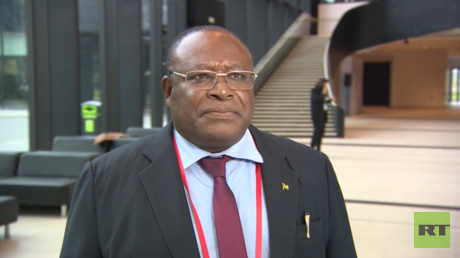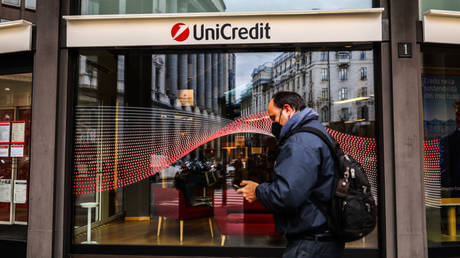After the Fed Punts, the ECB Throws Another Hail Mary
by Tom Luongo, Tom Luongo:

Last week FOMC Chair Jerome Powell and company did, essentially nothing, at their June meeting. They held interest rates at 0.25%, did not expand QE nor did they indicate any changes.
This wasn’t what the market wanted, as the bond were pushing the Fed to take rates negative and further open up the liquidity spigots.
Rates would be lower for longer and central bank swap lines would remain open. Other than that, the Fed didn’t give the markets what it wanted.
There were plenty of dollars in the system. That dynamic immediately changed after the FOMC meeting.
By punting the Fed put the ball back in the hands of the ECB who had been enjoying the dynamic of a weaker dollar to alleviate offshore dollar liquidity concerns.
It didn’t hurt that political instability here in the U.S. is at a high not seen since the 1860’s.
The stronger euro was assisting the ECB in selling their balance sheet expansion.
The ECB then announced it’s latest TLTRO-3 Auction for this quarter. The total amount of the auction was a stunning $1.3 trillion, which broke down into $550 billion in new lending and $760 billion in rollovers.
And it means the total TLTRO outstanding balance is already at all-time high levels and nothing has been solved yet.
But, as Goldman Sachs through Zerohedge points out, these loans were at incredibly generous rates:
Given improved terms (-1% for YR1 until June 2021, and -0.5% for YR2-3 if lending benchmarks criteria are met) starting with this auction, banks were expected to repay some outstanding TLTRO-II early to refinance at cheaper rates. Taken together, this still leaves some €550bn of net new take-up.
This gives banks the great incentive to get paid to borrow in euros and get the yield spread against other currencies like the dollar or the Japanese yen.
The size of this issuance is your proof that there simply aren’t enough dollars out there to soak up demand or banks wouldn’t have fed so deeply at the trough.
Earlier this week I was asked by Money and Markets to comment on Stephen Roach’s comments about the dollar setting up for a 35% drop. While I agree with him in the long run, I disagree about where the dollar is headed in the medium term.
“I think the dollar has a 35% fall in it — or more — but only after we get a peak, which we haven’t seen yet,” Luongo wrote via email. “For the past two years, the central banks have worked overtime to keep the dollar from rising thanks to massive offshore dollar-denominated liabilities. These still exist, some $8-9 trillion of them in the form of non-bank foreign corporate debt that was borrowed in dollars when the Federal Reserve was at the zero-bound rate under (former Fed Chiefs Ben) Bernanke and (Janet) Yellen. That hasn’t been worked off yet.”
And Powell’s refusal to go negative on yields or begin Yield Curve Control — pegging certain parts of the yield curve to a nominal rate, like the BoJ — continues to push the spread between the Fed’s and the ECB’s target rates and, more importantly, real rates.
This TLTRO offering was a way for banks who took up huge offerings from the Bundesbank earlier this week to flip those to the ECB, pocketing the difference while also creating new carry trades with other currencies trading at higher yields.
This is a win/win ultimately. Christine Lagarde gets to buy up more of the European sovereign debt market, further shoring up her ability to blackmail German voters to accept fiscal responsibility for the Euro-zone.
But in the long run it’s also undermining any idea of the euro. Negative rates are capital destructive and, as Martin Armstrong continually points out, precludes the euro from ever taking over for the dollar as a potential reserve currency.
And while Jay Powell’s announcement of zero-bound rates through 2022 is, ultimately, more dovish than it looks on the surface, it still isn’t dovish when compared to the ECB, the BoJ or the Swiss National Bank.



